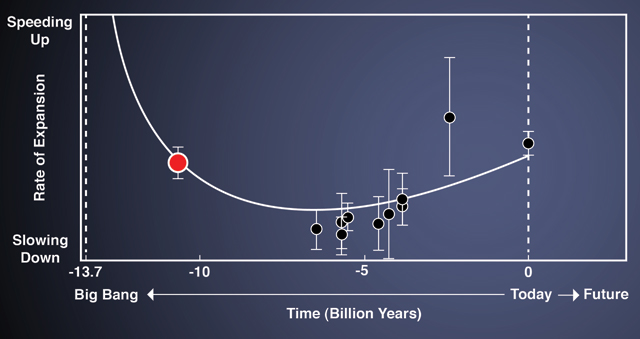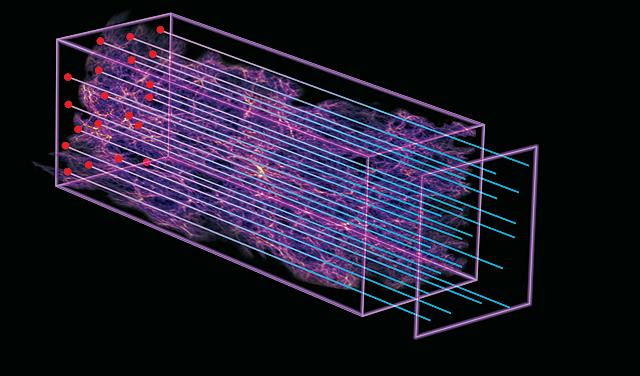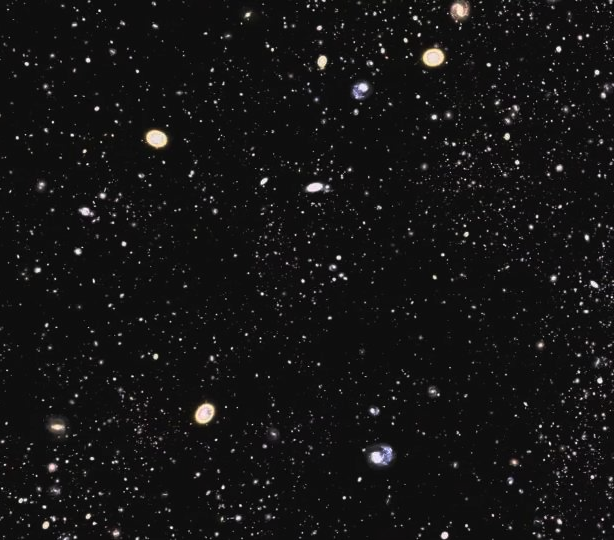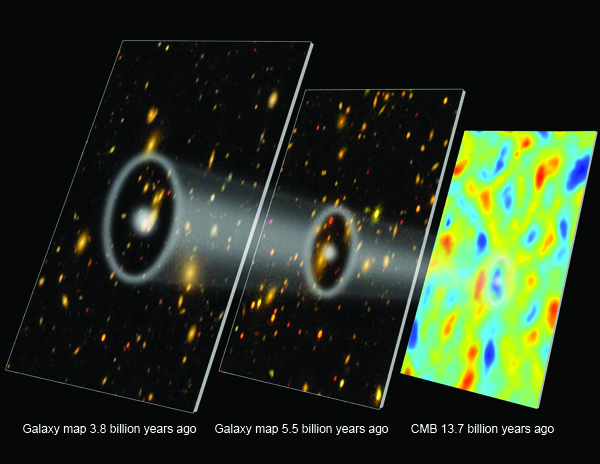Today’s post is a personal story of an exciting discovery from SDSS-III, written by SDSS astronomer David Nidever of the University of Virginia.
I just wanted to share the exciting news that APOGEE confirmed a known exoplanet! Now that we’ve shown that APOGEE can measure radial velocities precisely enough to find a known planet, this opens up a whole new range of scientific questions to study.
APOGEE’s spectrometers can now measure changes in a star’s radial velocity of less than 50 meters per second (about 110 miles per hour) – we could see a change in a star’s velocity corresponding to the speed of a sports car, from halfway across the galaxy. And not even a particularly fast sports car! Because we can measure stellar velocities so precisely, we can see the back-and-forth motions of the stars exerted by objects orbiting those stars, such as smaller companion stars or even planets.
And now we’ve seen one: the planet we rediscovered is called HD 114762b. Looking through the first batch of fields that had been observed at least 8 times, APOGEE detected clear signals of radial velocity shifts of 500 m/s from the star HD 114762, a fairly ordinary-looking main sequence star just a little hotter than the Sun***.
In 1989, Harvard astronomer David Latham discovered an unseen companion around HD 114762. He thought it might be a planet, but he didn’t have quite enough evidence to be totally sure. He wrote up his results in a Nature paper. Ten years later, our colleague Geoff Marcy (UC Berkeley) found fairly convincing evidence that HD 114762b is in fact an exoplanet, which he described in a paper in the Astrophysical Journal. It’s possible that it’s a brown dwarf, but an exoplanet is the more likely explanation.
Let me tell you the story of how we found it again.
The APOGEE*** project has been running since last summer, measuring spectra of stars in the Milky Way disk. In many cases, we’ve been getting spectra for the same stars over and over again.
For the past few months, I’ve been looking at approximately 1,300 stars – each of which has 8 or more APOGEE observations*** – that I had flagged as potential binaries due to large variations in their radial velocities. I used data from those observations as input into a computer program that fits the orbits of the binary stars*** – for each binary star system, the code creates a plot that tells me the most likely orbital path of each star. Of course, if one of the two “stars” in the system turns out to be a brown dwarf or a planet, the code will tell me the orbit of the brown dwarf or planet, as well as its mass.
After I generated the orbit plots, I looked through them all by eye, one by one, to find the ones whose orbits were most certain. We found several hundred good orbital fits; of those several hundred orbits, 45 looked like they could belong to brown dwarfs or planets.
We had the opportunity to observe some of these candidates with the Hobby-Eberly Telescope (HET). With a mirror nine meters (30 feet) in diameter, the HET is much bigger than the SDSS’s 2.5 meter telescope, so we can use it to collect better data – hopefully good enough to confirm whether one or more of these objects is actually a brown dwarf or planet. But observing time on large telescopes is hard to come by, and we only had enough time to get spectra for 10. So which ten would we choose?
Last Thursday night, I was talking with Scott Fleming, Rohit Deshpande, Suvrath Mahadevan, Matthew Shetrone, and Fred Hearty. (I should also mention here that Suvrath and Matthew gave us some of their observing time to look at these spectra – thanks!!) We were coming up with our final list of ten stars when Suvrath suggested that we check whether any of the stars on our list had been spotted as binary stars in previous surveys. Scott checked online, and that’s when we discovered that star #2 on our list was HD 114762! The graph below shows the data we collected from HD 114762. The line going up and down in the top of the graph represents the back-and-forth motion of the star – a clear sign of an orbiting planet!

A graph showing the back-and-forth motion (radial velocity) of the star HD 114762 due to the gravitational attraction of its orbiting planet, HD 114762b (image created by Scott Fleming)
What we know about the exoplanet HD 114762b is collected in its entry in the Visual Exoplanet Catalogue. HD 114762b’s orbit is known – the orbital parameters are available in its entry at exoplanets.org.
This isn’t an Earth-shattering (galaxy-shattering?) new discovery – after all, we already knew that HD 114762b is most likely an exoplanet, and Geoff Marcy’s team has measured its orbit quite precisely. But we’re very excited about APOGEE’s discovery, because it points to many more exciting things in the future. We knew APOGEE’s radial velocity measurements would be good, but not necessarily good enough to find exoplanets. This new discovery opens up a whole new regime of scientific exploration. Watch this space for many more exciting things to come!
P.S. We didn’t plan it this way, but it turns out that today’s post relates well to today’s today’s xkcd webcomic!
Footnote 1. The “HD” means it was first seen as part of the “Henry Draper Catalog” in the early 1900s. Back to main post
Footnote 2. “APOGEE” stands for “Apache Point Observatory Galactic Evolution Experiment.” Back to main post
Footnote 3. We identified that these stars were binaries due to their highly variable radial velocities, initially using the regular pipeline RVs, then my own RVs using the star’s combined spectrum as the RV template, which reduced the RV errors by a factor of two to three.) Back to main post
Footnote 4. The code was written by Geoff Marcy and his team. I used to work for him as an undergrad at San Francisco State University, and he kindly gave us permission to use the code for APOGEE. Back to main post













